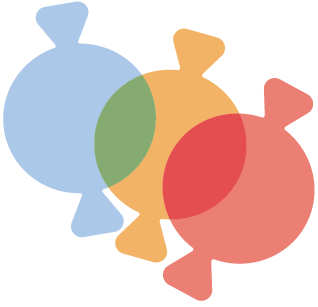Share the AAC Love!
February is the month for the celebration of love. It is a time for us to express our gratitude for the people who we care about, but it is also a time to express gratitude for the things that we love and that enhance our lives. At Forbes AAC and CoughDrop, AAC is our biggest love (we love it so much that it is infused in our blood!)!
Every learner with complex communication needs and every member of their support team is unique. They have unique needs, abilities, skills, goals, and preferences. Regardless of such subjectiveness, all learners who use AAC (at some point in their AAC journey) and those who support them love AAC. Although it is inevitable to have bumps in the road throughout the AAC implementation process, it is important to remember the why behind AAC and the things that we love about it that give us the energy to get over those bumps and keep going so that learners can reach their highest potential.
We love AAC because:
- It enhances language development and can prevent communication and language deficits from appearing (Romski & Sevcik, 2005). AAC has linguistic development benefits for those with and without complex communication needs, especially if AAC is introduced as early as possible.
- It creates inclusive learning environments and experiences for all learners. When AAC tools and strategies are implemented in the classroom, it not only makes the curriculum content accessible to learners with complex communication needs, but it also makes the content relevant and generalizable by all learners to all academic topics and areas of life (e.g. descriptive teaching).
- It makes it possible for learners with complex communication needs to autonomously communicate. AAC allows them to say anything they want anytime they want to say it. It increases independence and presents opportunities in all areas of life for those with complex communication needs.
- It is fluid! There is unaided AAC, which includes communication methods that are produced by the body without external tools (e.g., sign language, gestures, vocalizations, and facial expressions) and aided AAC, which includes communication methods that require an external tool beyond the body to produce (e.g., speech-generating devices, light-tech core boards, photos, objects, line-drawings, traditional orthography, printed words, etc.) (ASHA, n.d.). Texting and social media are used every day by individuals without speech impairments (and even those who have temporary speech impairments) and are forms of aided AAC. Learners with complex communication needs use and combine unaided and aided forms of AAC based on their needs and communication partner. There is a solution to allow those with complex communication needs to actively engage in all interactions and tasks.
- It is accessible! Whether you would like to purchase CoughDrop AAC out-of-pocket as a stand-alone app, or through your insurance as a funded dedicated speech-generating device, it is possible to get AAC into the possession of those who need it and/or those who could benefit from it.
We are proud to provide you with access to high-quality AAC solutions and educational supports so that you and your learner can experience firsthand the love of AAC that we know is possible, even though the inherent challenges of the AAC implementation process. AAC is life-changing, and we love having a part in changing lives!
Why do you love AAC?

References
American Speech-Language-Hearing Association (n.d.). Augmentative and Alternative Communication (AAC). Retrieved January 6, 2023, from https://www.asha.org/njc/aac/.
Romski, M. A., & Sevcik, R. A. (2005). Augmentative Communication and Early Intervention Myths and Realities. Infants & Young Children, 18(3), 174–185. https://doi.org/10.1097/00001163-200507000-00002
